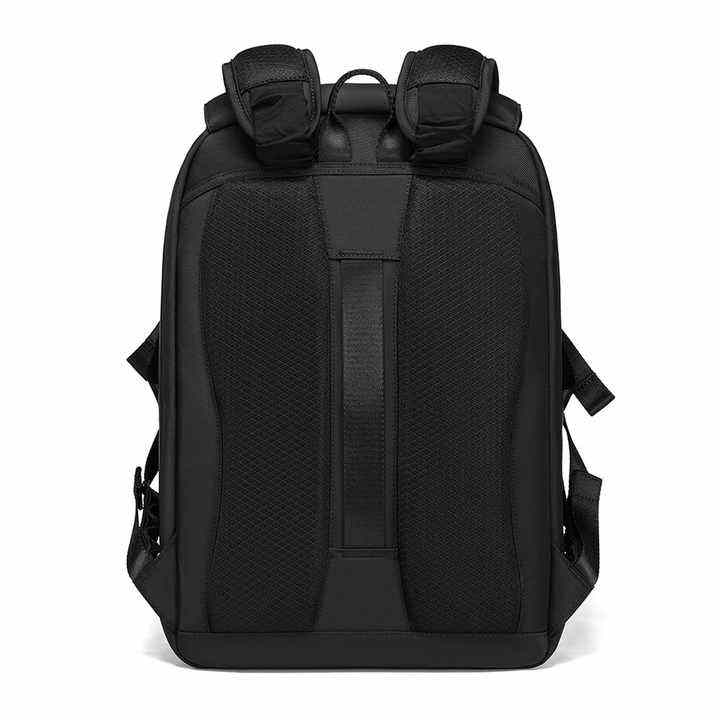בחירת הציוד הנכון להרפטים קומפקטיים
העלייה בפופולריות של יציאות ליום ומסעות קצרים
בימים אלו, אנשים שמחפשים תנועה ופעילות מגלים עניין גדול בטיולים קצרים בקרבת מקום ובסיורים של יום אחד, שכן הם דורשים מעט תכנון ומציעים חופשיות רבה. חישבו על זה: הליכה ביער ביום שישי בבוקר, כמה שעות בפינה רורלית, או פשוט איזה סיבוב עירוני עם נעליים נוחות. הברחות הקטנות הללו מציעות בדיוק את מה שאנחנו צריכים אחרי שבוע של שגרה מתישת. עם זאת, בחירת הציוד הנכון היא חשובה מאוד, במיוחד כשמבחירים תיק גב שמתאים למסע שמחכה קדימה.
תיק גב שנבחר בחוכמה תומך בתנועתיות, מבטיח נוחות, ומשפר את החוויה הכללית. בחירת תיק קטן מדי עלולה להשאיר אתכם מתים על איך לארוז את הדברים החיוניים, בעוד תיק גדול מדי עלול להפוך למשא כבד במהלך מסע שאמור להיות קליל וחופשי.
למה גודל תיק הגב חשוב יותר ממה שאתם חושבים
גודל המזוודה משפיע מאוד על חוויית הליכה במסלולים. מזוודה לא מתאימה משפיעה על האופן שבו המשקל נשא על הגוף, משנה את שיקול הדעת הלכתי שלך, ומקשה עליך להגיע לתוך המזוודה כשמגיע הרגע dafür. בהליכות של יום אחד או נסיעות קצרות, בחירת גודל לא נכונה יכולה להוביל לכתמי כתפיים בצהריים או לגלות באמצע הדרך ששכחת ציוד חשוב בבית. מזוודה בגודל הנכון מאפשרת למבקרים לקחת עימם חטיפים, בקבוקי מים, פריטי טיפוח, אולי אפילו מעיל קליל, מבלי להרגיש כאילו המזוודה מושכת אותם לאחור.
על ידי התאמת נפח ומאפייני תיק הגב לאורך המסע ולסוג הקרקע, אתם מקטינים את הסיכון לרע נוחות ומבטיחים יציאה נעימה יותר. הבנת הדרך לבחירת הגודל הנכון היא הצעד הראשון בתכנון מסע חכם.
הבנה של נפח וקיבולת תיקי גב
מדידה בליטרים: הגישה הסטנדרטית
בימינו hầu כל התיקים האחוריים יוצאים לדרך עם מדידות ליטר שמסבירות לנו עד כמה אנחנו יכולים לדחוס פנימה. כשמתוכננים לצעדות קצרות או רק יציאה מהירה לטבע, נפח של 15 עד 30 ליטר נוטה להתאים יפה. נפח כזה נותן מקום לכל הדברים הכי חשובים שנדרשים בשביל המסלול: כמה חטיפים בשביל לשמור על רמות האנרגיה, בקבוקי מים רבים כדי להישאר מומדים, קרם הגנה מפני השמש כדי להגן מפני הקרניים החזקות, אולי אפילו להוסיף סוודר נוסף אם מזג האוויר מתקרר או לצלם רגעים מיוחדים בדרך.
תיק אופנועי של 15–20 ליטר מתאים לצעידות עירוניות, סיורי צפייה, או מסלולים קצרים מאוד בהם נדרשים חומרים מזעריים. אם אתם יוצאים לאזורים עם מזג אוויר משתנה, נ carrying extra clothing or hiking gear, תיק בגודל 20–30 ליטר מציע את החלל הנוסף מבלי להיות מסטרן.
מאפיינים חיצוניים ומבנה פנימי
כשמדברים על נפח, זה לא רק על כמות הליטרים שנכנסים פנימה. גם הדרך בה מופעל המרחב הפנימי חשובה באותה מידה. ראו שקיות גב שיש להן מספר תאים שונים, כאלה שמסוגלות להכיל מיכל מים להידרציה, בנוסף לאלה עם מקומות להגדרת ציוד מבחוץ. תכונות אלו מרחיבות באמת את מה שהשקית יכולה לעשות. לחלק מהשקיות יש כיסים מיוחדים לבקבוקי מים, אחרות יש להן רוכסנים שנפתחים מהצד הקדמי במקום מהחלק העליון. וגם אל תשכחו את המעטפת המבופה למחשב נייד אם חייבים להשתמש באותה שקית גם בשביל הליכות בטבע וגם בשביל הליכה למשרד. המגע ההוספה הזה יוצר הבדל גדול כשמטרידים שקית אחת שתכסה מספר מטרות לאורך השבוע.
בנוסף, חומרים קלים אך עמידים כמו ניילון ripstop וחומרים שמייצבים את עצמם מול מזג האוויר משפרים את הביצועים של השקית בשעת שימוש בחוץ מבלי להוסיף נפח.
נוחות וכושר: גורמים מרכזיים מעבר לכמות
חלוקת משקל נכונה
נוחות חשובה גם אם זה רק ליום אחד. כשאת בוחרת תיק גב, תסתכלי קודם איך הוא יושב על הכתפיים. אלה הטובים לוקחים לחץ מהנקודות הכואבות ומפיצים את המשקל כראוי לאורך עמוד השדרה. תבדוק אם יש דברים כמו חיתול סדיר על החגורות, אולי גם חגורת חזה, ובטח משהו נושם על הגב. מודלים רבים מגיעים עכשיו עם חגורת מותניים צר שעושה פלאים כדי לשמור על הכל יציב כאשר הליכה ברחבי העיר או מסלולי הליכה.
הגבשנאי הטוב ביותר למסע קצר צריך להרגיש כמו הארכה של הגוף שלך. כאשר הוא מכויל כראוי, הוא לא יתנדנד במהלך הליכה או טרמפה, ויאפשר לך לשמור על איזון ועל אנרגיה.
בשיקול של אורך הגב ומשקל העומס
אורך הגוף העליון נוטה להישכח כשמבחירים תיקי גב. רק בגלל שמשהו נראה קומפקטי לא אומר שזה יתאים לכל גוף. רוב יצרני הציוד החיצוני החלו להציע את התיקים שלהם בגדלים שונים, חלקם אפילו עם לוחות גב ניתנים להתאמה שמאפשרים התאמה טובה יותר. ברור, בטיולים קצרים אף אחד לא ממש מתייחס לרושם של תיק לא מתאים. אך מי ש experiente בהליכה של מספר שעות יודע עד כמה תיק לא מתאים הופך לאי-편י כשזה מתחיל להרגיש עייף וכל תנועה נראית לא טבעית.
Чем меньше вес, тем приятнее прогулка. Эффективная упаковка и правильно подобранная вместимость уменьшают перегрузку и удерживают общий вес в пределах нормы.
Функции, которые добавляют ценность в однодневных поездках
Совместимость с гидратацией и удобный доступ
שמירה על הידרציה היא חיונית גם בנסיעות קצרות. כיום, רבים מהמיכלים כוללים שרוולים למיכלי מים או מחזיקי בקבוקים שנוח להגיע אליהם. אפשרות זו מאפשרת למשתמשים לשתות בדרכם מבלי שיהיה עליהם לעצור ולפתוח את המיכל.
תכונה חשובה נוספת היא כיסים עם גישה מהירה. הם אידיאליים לשמירת משקפי שמש, קרם הגנה, חטיפים או טלפונים ניידים. תאים עם רוכסן, תליות לתפסים ונقודות גישה צדדיות הופכות את הארגון והשליפה של פריטים למהירים ופשוטים יותר.
עמידות במזג אוויר ושקולות עונתיות
לפעמים מזג האוויר יכול להרוס אפילו את הטיולים הקצרים ביותר. יש לחפש תיקי גב שמיוצרים מבדים בעלי עמידות במים או כאלה שמכילים כיסויים נגד הגשם. כשמתוכננים הליכות ביום החורפי, לרוב יש צורך במרחב נוסף לתוך התיק כדי להכניס את כל שכבות הבגדים הסמיכות ואף אולי קרסים קטנים. נפח של כ-25 עד 30 ליטר נחשב למתאים ביותר למקרים כאלו. רוב הטיילים מוצאים שגודל זה מאוזן בצורה טובה בין נפח נשיאה למשקל שאינו מפריע בטיול.
מערכות אוורור, כמו לוחות סריג בגב, שוות גם כן שיקול עבור הליכות בקיץ. הן עוזרות להפחית הצטברות זיעה ומעודדות זרימת אוויר לצורך נוחות מוגזמת בתקופות החמות.

שימושים אידיאליים לגודלי תיקי גב שונים
חקרנות מינימליסטית (10–15 ליטר)
גודל זה הוא אידיאלי לנוסעים שמע packs קל וצריכים לשאת רק בקבוק מים, חטיפים קטנים, טלפון, ארנק, ויתכן מעיל סופת קומפקטי. מזוודות הם אידיאליים לסיורים בעיר, ביקור במוזיאונים, או שבילים נוף של חצי יום עם מתקנים מותקנים.
הם גם בחירה מובילה עבור אלו שרוצים לשלב סגנון עם פונקציונליות, שכן רבות מהמותגים מציעים עיצובים חלקים ושגרתיים שלא נראים מדי 'לחיי הא웃דורס'.
הליכות מתונות ופעילויות בפנאי (20–30 ליטר)
לרוב הליכות של יום אחד או יציאה ליום אחד לטבע, הטווח הזה פוגע בנקודה המתוקה. אפשר לשאת ציוד חיוני כמו תיק עזרה ראשונה, מפת שביל, מעיל, מצלמה, ומאכילה ומים מספיקים לשאר היום.
תיק הגב הזה מציע איזון בין נפח לנשיאה נוחה, מה שעושה אותו רב-תכליתי עבור צלמים טבע, חובבי הליכה מהירים, ואנשים שמתכננים ל Begashot מזג אוויר משתנות.
בחירת המותג והעיצוב הנכון לתיק הגב
מותגי ציוד חוץ אמינים
מספר מותגי חוץ מתמחים בגבנאות בעיצוב ארגונומי שמותאמות לסוגי הרפתקאות מגוונים. חברות כמו Osprey, Deuter ו-Gregory מציעות גבנאות ליום עם תכונות נוחות מתקדמות ופתרונות אחסון חדשניים. בעוד שמותגי זול אולי נראים יותר זולים, השקעה בגבנאית מותאמת מבטיחה שימושיות, נוחות ודיורתיות לטווח ארוך.
לפני הקנייה, נסה את הגבנאית בחנות אם אפשר או בדוק סקירות של משתמשים כדי להבין איך היא מתפקדת בתנאי שימוש בפועל.
העדפות סגנוניות ורב-תכליתי
לחלק מהאנשים יש העדפה לעיצובים אורבניים או מיועדים לנסיעה שמשתלבים גם בטבע הפתוח וגם בסביבת עיר. גבנאות ליום הופכות, עיצובים מינימליסטיים או גבנאות עם כיסים נסתרים לאחסון הם אידיאליים לנוסעים שרוצים תיק שעובר חלק מהשביל למטוס ועד רחובות המרכז.
תחשבו כמה תפקידים תיק הגב שלכם צריך למלא, ואז בחרו בעיצוב שמכסה את כל התחומים מבלי להתפשר על נוחות.
תחזוקה ואורך חיים
טיפים לניקוי והранה
כשחוזרים מרחבים או נסיעות, תמיד רעיון טוב להוציא את כל הדברים מהתיק ולנענע אותו היטב כדי להסיר את כל הזוהמה והדברים שנשארו תקועים בפנים. אם החבילה רטובה כלשהו במהלך הטיול, אל תזרוק אותה לאחסון כשהיא רטובה - השארי אותה במקום מאוורר עד שתייבש לחלוטין כדי שלא יתחילו לצמוח עובש. לצורך ניקוי, רוב החבילות מגיבות היטב לסבון עדין המערבב עם מים חמים. אמנם, צריך להימנע ממכונת כביסה, אלא אם כן התווית על האריזה אומרת במפורש שזה בסדר למכונת כביסה. תמיד לבדוק את הוראות הטיפול האלה קודם!
בעת שאינכם משתמשים בו, אחסנו את תיק הגב במקום קריר ויבש והימנעו מחשיפה ממושכת לאור השמש, שיכול לפגוע בחומר לאורך זמן.
איך להאריך את חיי התיק
הימנעו מלהעמיס יתר על המידה או למתוח תאים מעבר ליכולתם. אם הסורגים תופסים לעיתים קרובות, הרכיבו שמן סיליקון כדי לשמור על תפקוד חלק. בדקו מעת לעת את הרצועות, הנעליים והחיבורים לבלאי וטפלו בבעיות קטנות לפני שהן הופכות לפגיעות שלא ניתן לתקן.
תיק גב שומר היטב יכול לשרת אותך באופן מהימן במשך שנים של יציאות ספונטיות וגילויים בפנאי.
שאלות נפוצות
איזה גודל תיק גב עליי לבחור להליכה של יום אחד?
מזוודה של 20–30 ליטר היא בדרך כלל אידיאלית, מספקת מספיק מקום לאוכל, מים, בגדים נוספים וחפצים אישיים מבלי להיות גדולה מדי.
האם אפשר להשתמש בתיק גב לבית ספר להליכה בפנאי?
למרות שזה אפשרי עבור שבילים קצרים וקלים, לתיקי גב לבית ספר אין בדרך כלל תמיכה ארגונומית, התנגדות לחות ותכונות ספציפיות לטיולים שמספקים נוחות בהליכה.
האם תיק גב של 40 ליטר גדול מדי עבור יציאות של יום אחד?
באופן כללי, כן. תיק גב של 40 ליטר נועד לשימוש של מספר ימים והוא עשוי לעודד חבילת יתר, ולכן הוא פחות מתאים ליציאות קצרות או הליכות קצרות.
האם אני צריך תיק גב מיוחד לעונות שונות?
לطقס העונה יש השפעה על ציוד הדרוש. בקיץ, חשובה תקשורת, בעוד בחורף ייתכן שתזדקקו ליותר מקום עבור שכבות חמימות. התאימו את גודל התיק ותכונותיו בהתאם.


